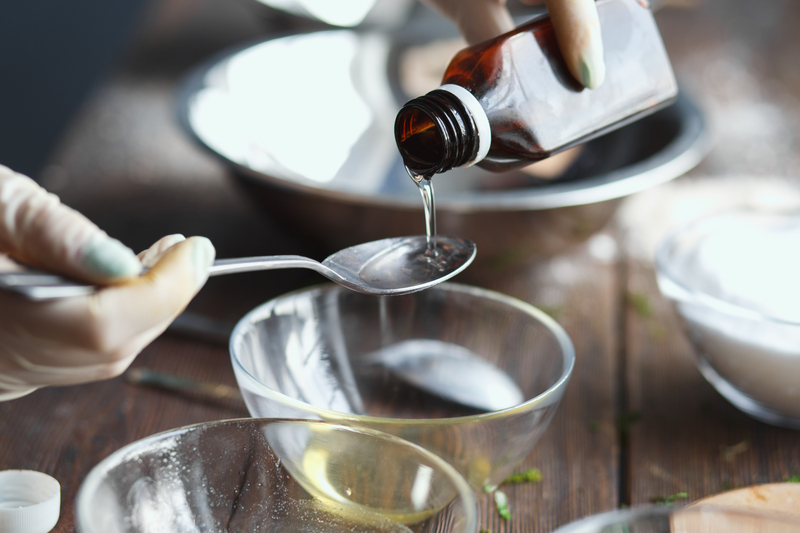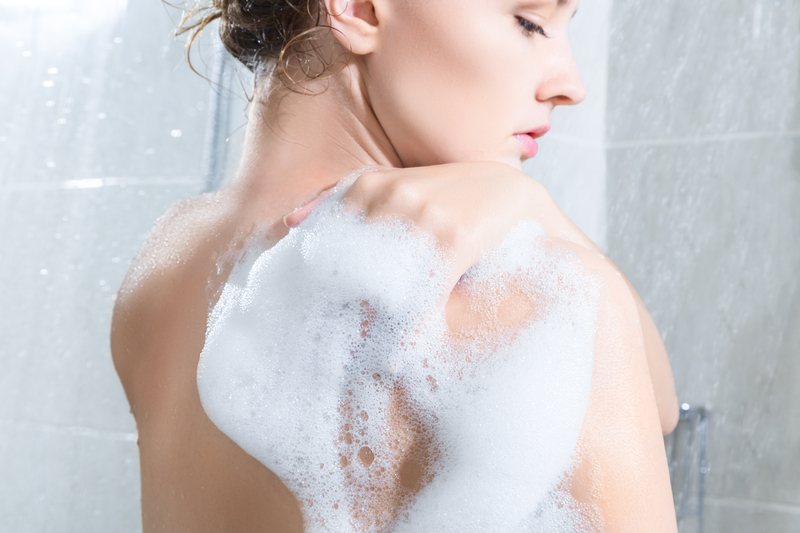Clever Hacks for Removing Burnt Residue from Your Cooktop
Posted on 25/05/2025
Clever Hacks for Removing Burnt Residue from Your Cooktop
Do you often struggle with stubborn, burnt-on food residue on your stovetop? Whether it's a glass-ceramic surface, electric cooktop, or traditional gas range, burnt residue can make even the cleanest kitchens look messy. Worse, these burned spots can eventually damage your cooktop if left unchecked. That's why learning some clever and effective hacks for removing burnt residue from your cooktop is important for maintaining both cleanliness and functionality.
In this comprehensive guide, we'll reveal the most effective ways to clean burnt residue from any type of cooktop. By the end, you'll discover not just tips for surface cleaning, but also maintenance strategies to keep your cooktop sparkling and in prime condition. Let's explore expert-approved hacks, household supplies, and the best techniques for a fresh, gleaming finish every time!

Why Does Burnt Residue Accumulate on Cooktops?
Understanding why this sticky issue occurs is the first step in preventing it. Burnt residue forms when food spills or overflows while cooking. High heat then carbonizes these spills, making them adhere tightly to the cooktop surface. Frequent culprits include sugary syrups, sauces, milk, and starch-rich foods. Over time, neglecting these messes encourages even tougher stains, making cleaning far more challenging.
Common Types of Cooktops and Their Cleaning Challenges
- Glass and Ceramic Cooktops - Easily scratched if you use the wrong cleaning materials or harsh abrasive pads. Residue often becomes welded to the glass and needs gentle but effective removal techniques.
- Induction Stovetops - Usually, these have similar surfaces to ceramic and glass models, requiring similar care against chipping or scratching while cleaning burnt residues.
- Gas Burners - Grates and removable parts collect burnt debris, which can block flame ports if not removed properly.
- Electric Coil Ranges - Spattered food burns onto the metal coils and the drip pans underneath, often resulting in unsightly charring.
Precautions: Safety Comes First
- Always unplug or turn off your cooktop and let it cool completely before cleaning.
- Test any homemade solution on a small, inconspicuous spot to avoid permanent damage.
- Consult your manufacturer's manual to avoid voiding warranties or using prohibited products.
The Best Hacks for Removing Burnt Residue from Cooktops
Ready to restore your cooktop's shine? Below, you'll find several clever hacks, using both store-bought and natural methods, divided by surface type.
1. Baking Soda and Vinegar Paste
Baking soda is a natural abrasive that can lift away burnt-on residue without scratching your cooktop surface.
- Step 1: Sprinkle a generous layer of baking soda over the burnt area.
- Step 2: Spray or gently drizzle white vinegar over the baking soda. It will fizz, helping to lift stuck-on gunk.
- Step 3: Let this sit and bubble for 10-15 minutes.
- Step 4: Gently scrub using a soft, non-abrasive sponge.
- Step 5: Wipe with a damp microfiber cloth. Repeat as needed.
This hack is especially effective on glass, induction, and ceramic cooktops where abrasive scouring pads can do more harm than good.
2. The Power of Steam
For tougher, caked-on burns, steam works wonders by softening residues so they're easy to remove.
- Step 1: Place a wet towel directly onto the residue and heat the cooktop gently for 2-3 minutes (use caution if you try this method; check your manual for safety).
- Step 2: The generated steam loosens burnt bits for easy wiping.
- Step 3: Use a soft plastic scraper or spatula to lift loosened debris.
- Step 4: Wipe clean with a damp cloth.
This approach is especially useful for electric coil ranges and gas burner grates.
3. Razor Blade Trick (For Glass Cooktops Only!)
For the most stubborn burnt stains on glass stovetops, a dedicated cooktop-safe razor blade can help.
- Always use a new, sharp, and clean razor blade held at a 45-degree angle.
- Gently scrape the residue without digging into the glass.
- After scraping, clean the surface with a damp microfiber cloth.
Note: Never use this method on ceramic or induction cooktops unless specified as safe by your manufacturer.
4. Dishwasher Tablet Magic
Did you know your dishwasher tablet can double as a cooktop cleaner?
- Wet a dishwasher tablet under running water.
- Rub it gently over burnt spots with a gloved hand.
- The cleaning agents break down sticky, greasy residues and stains.
- Wipe clean, then rinse the area thoroughly.
This technique works on a range of cooktop surfaces--always check compatibility with your appliance first.
5. Commercial Cooktop Cleaner Creams
There are specialty cleaning creams designed for ceramic and glass surfaces.
- Apply the cream directly to burnt areas.
- Allow it to sit for the recommended time.
- Buff with a microfiber cloth in circular motions, then rinse clean.
These products are formulated to lift burned-on food without dulling or scratching these delicate surfaces.
6. Lemon and Salt Scrub
Lemon is a natural degreaser, and when combined with salt, it helps scrub away charred food without excess abrasion.
- Cut a lemon in half and sprinkle salt on the cut side.
- Use the lemon as a scrubber, squeezing juice onto the burn while you rub.
- Let it sit for 5-10 minutes before wiping clean.
This all-natural method works especially well on mild to moderate burnt residues.
7. Ammonia for Gas Burner Grates and Drip Pans
Warning: Use ammonia only in a well-ventilated area and never mix with bleach!
- Seal grates or drip pans in a zip-top bag with a few tablespoons of household ammonia.
- Let them sit overnight; the fumes will loosen tough burnt areas.
- Open the bag outside or in a ventilated place, rinse and scrub with a brush, then wash as usual.
8. The Olive Oil Hack
This hack removes sticky, slightly burnt residues from glass and ceramic surfaces.
- Apply a few drops of olive oil directly onto the burnt area.
- Allow to sit for 10 minutes to soften residue.
- Wipe with a soft cloth, then clean with soapy water for a streak-free finish.
Quick Reference: Best Methods for Each Cooktop Type
- Glass & Ceramic Cooktops: Baking soda & vinegar, commercial creams, razor blade (with caution), olive oil, lemon & salt.
- Induction Cooktops: Baking soda paste, microfiber cloths, commercial induction-safe cleaners.
- Gas Stoves (Burner Grates): Soak in ammonia, steam cleaning, dishwasher tablets.
- Electric Coil Stoves: Remove drip pans and soak, use baking soda on stubborn spots.
Pro Tips for Maintaining a Spotless, Burnt-Residue-Free Cooktop
- Wipe spills as soon as your cooktop cools down to prevent hard-to-remove residue.
- Clean with a soft microfiber cloth and mild detergent for daily maintenance--this minimizes the need for aggressive cleaning.
- Avoid abrasive scrubbers like steel wool or scouring powders that may scratch the surface.
- Always dry the cooktop with a clean towel to prevent streaks and water spots.
- Consider using removable cooktop protectors or liners for easy cleaning.
- Periodically check dishwasher tablet, commercial cleaner, or paste compatibility with your manufacturer's recommendations.
When to Call a Professional
If burnt residue on your cooktop remains after several attempts and you notice chipping, cracks, or discoloration, it may be time to consult a professional appliance technician. Persistent residue can sometimes indicate deeper issues or require specialized cleaning methods. Never use harsh chemicals not rated for appliances--these can void warranties or damage surfaces.

Frequently Asked Questions
Can I use Magic Erasers to remove burnt residue?
Magic Erasers can work on some ceramic and glass cooktops, but use caution as they are mildly abrasive. Always test a small, hidden area before widespread use, and avoid rough scrubbing.
How do I prevent burnt residue from forming?
Prevention is the best hack of all! Place pot lids carefully, watch over boiling liquids, use a splatter guard, and always wipe spills quickly as soon as the stove cools.
Is it safe to use bleach on my cooktop?
No--avoid using bleach, as it can discolor or damage glass, ceramic, and metal surfaces on most cooktops.
What if the burnt residue smells bad?
Stubborn residue can produce lingering smells, particularly on gas and electric coil stoves. Clean the area thoroughly and boil a pot of water with lemon slices to neutralize odors afterward.
Conclusion
Removing burnt residue from your cooktop doesn't have to be a dreaded chore. By using these clever cleaning hacks -- from natural pastes to commercial creams and safe scraping tools -- you can quickly restore your stove to like-new condition. Remember, the key to maintaining a sparkling cooktop is regular attention and immediate spill cleanup. With these clever hacks for removing burnt residue from your cooktop, you'll be equipped to keep your kitchen centerpiece clean, functional, and always ready for your next culinary adventure.
For more home cleaning tips, subscribe to our newsletter and stay on top of the latest smart cleaning solutions!




